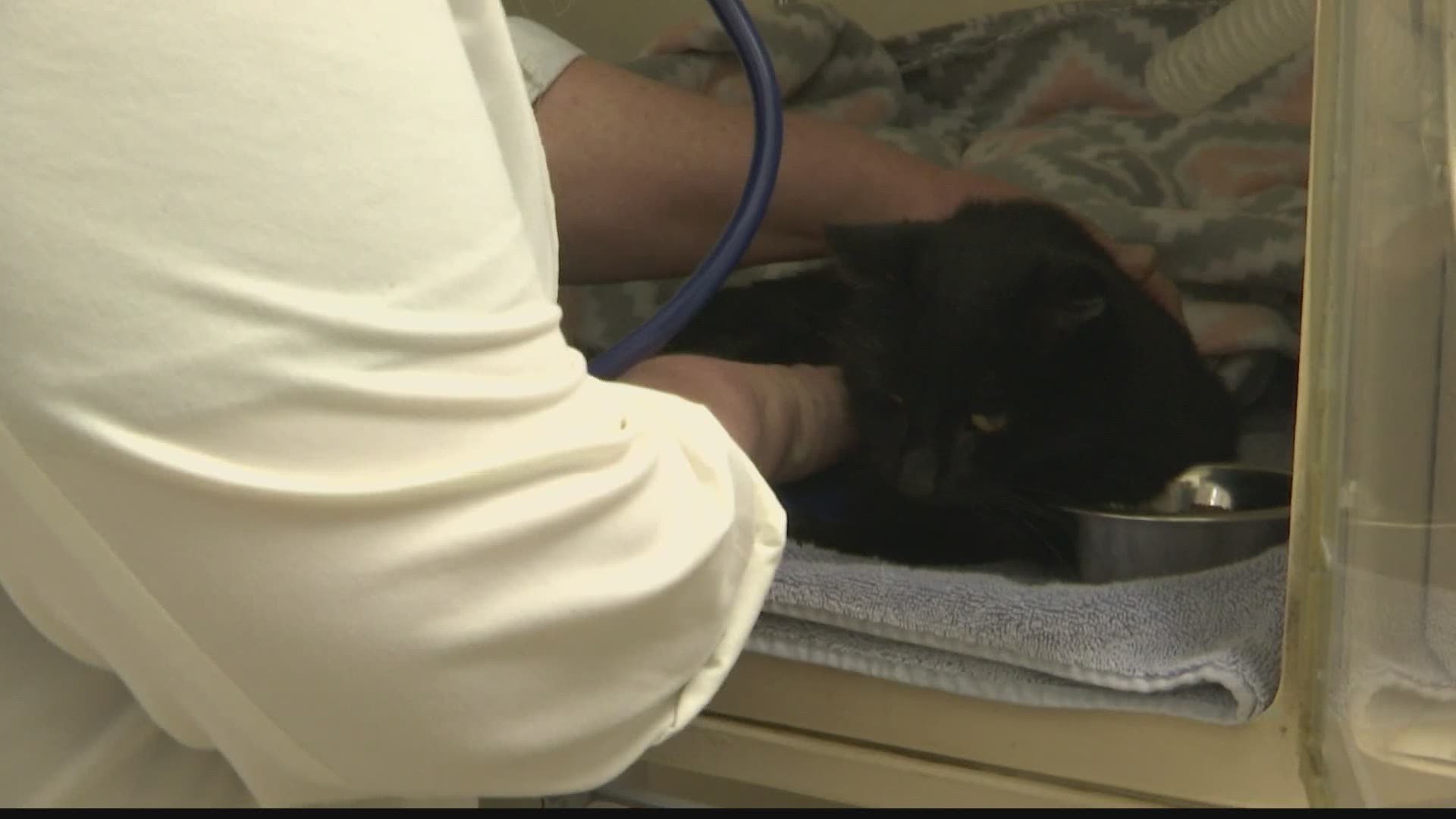HUNTSVILLE, Ala. — A local emergency animal doctor tells WZDX they see the same emergencies with pets that human hospitals see, and there are things you can do to be prepared and help you recognize if something goes wrong with your fur baby.
"We see the whole gamut of emergencies that a human hospital would see," said Dr. Dawn Tucker, who has been caring for pets at Animal Emergency and Critical Care in Huntsville for more than a decade.
One of the main reasons pets are brought into the ER?
"The one problem we see most frequently is due to vomiting and diarrhea," she said. "This needs to be addressed in a hospital setting."
Most of these cases are caused by dramatic diet changes or by something your pet got into you never intended for them to eat.
Dr. Tucker says allergies are another reason pets are brought in.
"Allergic reactions are common," she said. "They have a perfectly normal pet and then all of a sudden they may notice some vomiting and that seems to go away, and then within a few hours, their face is swelling, and they're turning red. Those are definitely allergic reactions that need to be addressed immediately before the progress too far."
Here are some common things pets can be allergic to:
"Bee stings, wasp stings, and any type of insect envenomation can cause an allergic reaction," said Dr. Tucker. "They can be allergic to different foods. Dogs and cats can develop contact allergies just like humans, so if you have been washing their bedding in one type of detergent for years, they could develop a contact allergy for that detergent and then become allergic to contact with their bedding after its been washed."
Minor allergic reactions can be treated with an antihistamine, but Dr. Tucker says if you're in doubt, give the emergency clinic a call and ask questions.
"It's easier to treat a condition when its small and starting out than to wait for it to get worse," she said. "We definitely can advise a client if they want to wait. We can give them some things to watch for and then advise them at what point in time they absolutely need to bring them in."
Here are some things to look for that indicate your pet should be brought into the ER immediately:
"If their animal collapses and doesn't respond, that needs to be seen immediately," she said. "If there is any loss of blood that is ongoing, that needs to be seen immediately. If you had a pet that had some vomiting and you were going to wait a while, but the vomiting continues, they can dehydrate extremely fast, and that needs to be seen."
Pet owners who want to take action to further educate themselves on potential emergency scenarios can take classes at Animal Emergency and Critical Care.
"We have been offering a first aid class for the general public pet owner to give some different skills to pet owners so they can do some life saving measures -- how to properly put on a bandage and how to properly put on a tourniquet if you've got some major bleeding," said Dr. Tucker.
But even simpler and very important -- Dr. Tucker says to make sure you know the phone number and address of the animal emergency care clinic closest to you.
More emergency situations that could lead pet owners to bring their animal in for treatment can be found on Animal Emergency and Critical Care's website.
For information on classes offered for pet owners, visit Animal Emergency and Critical Care's website.
RELATED: My pet is choking! What do I do?!

